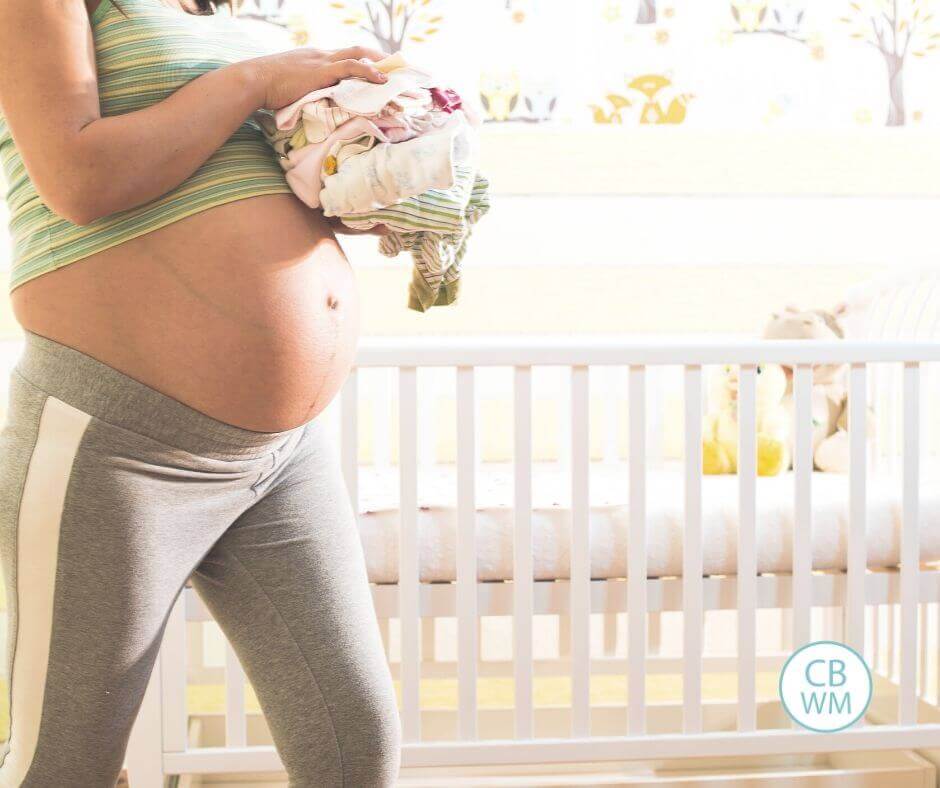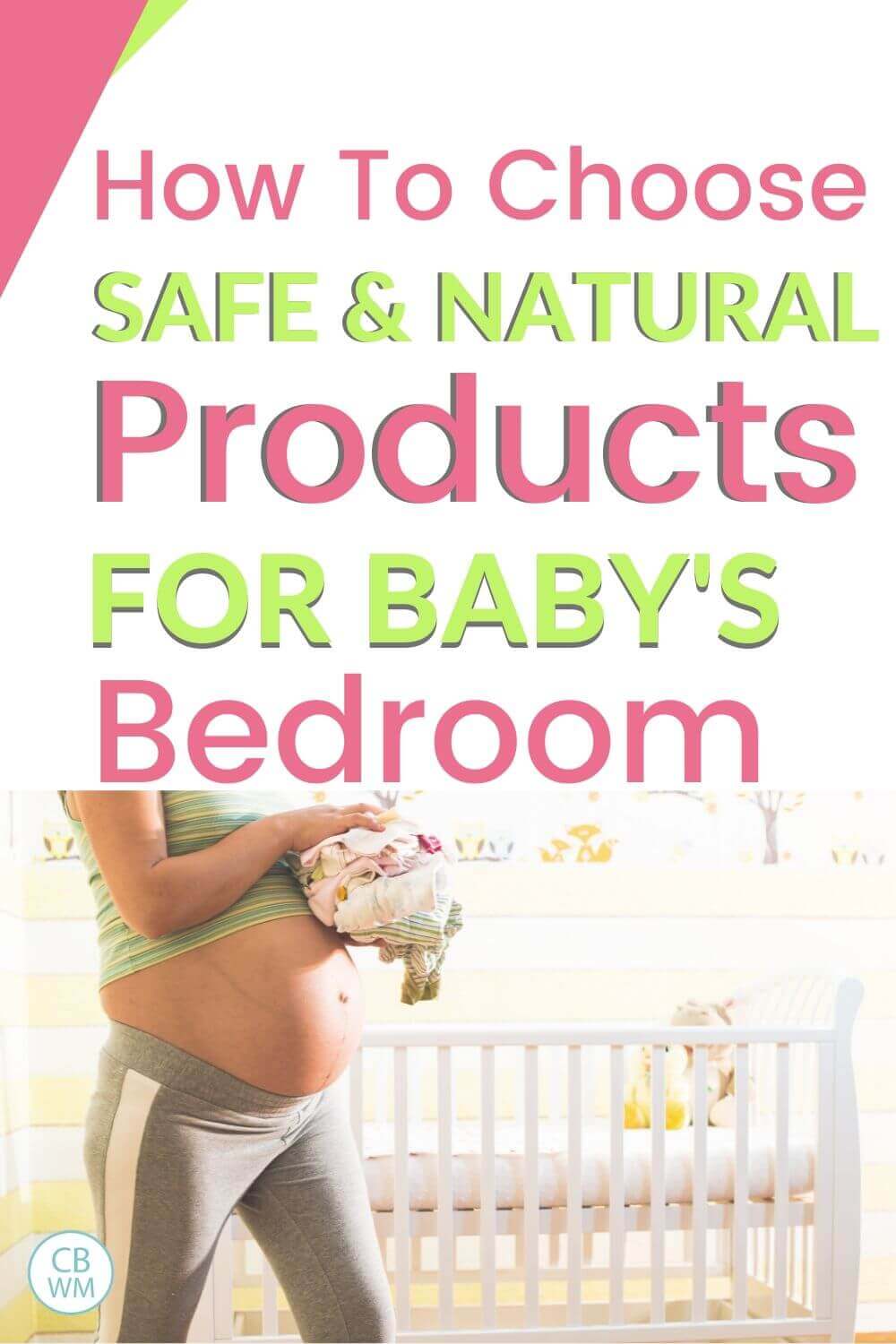Tips for choosing safe products for baby’s room that are also natural. Get tips from a mom who has done the research.

by Sobitha Ravichandran
Babies have very delicate skin and sensitive to their environment. As a parent, you want the best for your child’s health. From the clothes they wear to the toys they play with, there are a plethora of everyday products that contain toxins or chemicals that can harm your child’s health.
Babies spend a large portion of their initial months asleep. So be especially careful while choosing products for your child’s nursery or bedroom that may affect their sleep or cause other health concerns.
Natural baby products are always a good option because they are eco-friendly and do not contain harmful chemicals. Below are some tips for choosing safe and natural products for your little one’s room.
Post Contents
Consider the Material
The first thing you should always check when choosing products for your baby’s bedroom is the material from which it is made. For instance, when choosing toys, make sure that the toys are made from safe materials.
It is important to avoid toys and other plastic products that are made using Phthalates, and PBS as they are harmful materials. Also, avoid products like carpets, rugs, and window dressings made with volatile organic compounds. These compounds are commonly found in paint.
They tend to evaporate as time passes. As they evaporate, they create fumes that your baby could inhale and, as a result, they fall sick. You can check to make sure that these chemicals are not present in the products in your baby’s room. This will also help you to eliminate the risk without avoiding the products altogether.
For instance, you can air the rugs and carpets out for a while before placing them in the room. Luckily, the market is packed with safe baby products like the best non-toxic baby play mats you can choose from.
Choose Baby Wipes, Nappies, and Creams Wisely
Several enormous baby brands have been accused time and again of adding dangerous and synthetic chemicals to their products. Such harmful chemicals include chlorine, bleaches, parabens, and dioxins, among others.
When these elements are applied to products that come into direct contact with the baby’s private areas, they pose a real concern. You can use the information on Kids in Danger to find products to avoid. You can also look at the ingredient list for all the products that you have in your baby nursery before placing them near your baby.
Choosing Safe Bath and Oil Products
Note that newly born babies do not need to be bathed using soap. Freshwater would suffice for the first few months. However, when the time comes to get bath soap, you may want to consider natural soaps that are made using natural products. You may be duped into thinking that essential oils are safe. However, they are very potent hence quite dangerous, primarily when used on young ones.
When choosing oil products for your child, make sure to go for pure and organic oils. In the case of massage oils, the best options would be cold-pressed olive, coconut, or jojoba oils. The oils are more beneficial and less harmful, and they have the added benefits of moisturizing. The Environmental Working Group (EWG) have some guidelines on which baby products meet that threshold, and which don’t.
Selecting the Best Baby Garments
The best and the safest baby garment materials are soft and non-irritating. For newborns in particular, you want to make sure to get comfortable, loose, and soft clothes that will not affect the newly-cut umbilical cord. You also want to avoid fabric that is either clingy, slippery, or thick.
Whatever type of cloth you choose, consider going for a breathable fabric that can withstand a lot of washing, as well as wear and tear from playing and tumbling. Cotton is also a safe and comfortable option. GOTS certified organically-manufactured cotton can be used on garments as well as beddings.
Make sure to avoid clothes and beddings that are made from synthetic fabrics because they are unsafe. Moreover, they stain easily and are less tough than their counterparts. Also, make sure that all clothes and beddings used in your child’s room are pre-washed. Doing so will help to remove most of the chemicals used on the fabrics during the manufacturing process.

Avoid Choosing Fashion over Function
Some parents get caught in between picking products that look good over how they function. Common sense dictates that the obvious choice should be function, but some parents focus more on trying to make the baby room look good, especially new parents. For instance, a parent may choose curtains with color that avoid enough light from penetrating the room in an attempt to match curtains to the other colors in the room.
Make Sure the Furniture is Safe
When choosing furniture for the baby’s room, you must make sure that the products are safe. Avoid furniture that is manufactured from toxic materials and instead opt for items like an organic baby crib.
Also, stay away from furniture that has sharp corners. If you cannot wholly avoid sharp-cornered dressers and cabinets, make sure that they are at least baby-proof. You may also want to avoid certain types of rocking chairs as they pose a threat to the safety of your baby’s little toes and fingers. The best option would be a non-toxic glider with a locking mechanism that will keep it from gliding when it is not in use.
Choosing the Safest Baby Toys
When choosing the safest baby toys, consider ones that are large enough. Small toys pose the danger of chocking for kids. Use a small-parts tester, also known as a choke tube, to determine whether a toy is too small for the baby.
You also want to make sure that toys with batteries have well-secured battery cases. The batteries and their fluids can cause chemical burns, choking, and internal bleeding when the baby puts them in the mouth. It would be wise to avoid riding toys until your baby reaches an age where he can sit.
Make sure to choose durable toys and those that do not have sharp ends or edges. Keep products like balloons, vinyl, and latex away from kids that are below eight years old. Chewing and inhaling the chemicals used to make such toys could harm your child.
Finally, make sure to avoid stuffed toys that are sold or given away at carnivals and fairs because they often do not meet safety standards.
The Bottom Line
When choosing safe and natural baby products in the market, it is wise to read through the ingredients and find out their impacts. Sometimes it may also be wise not to trust entirely the words of the manufacturers. Some manufacturers are not very forthcoming or transparent about their product ingredients and hide the truth about the chemicals in their products.
In any case, do your due diligence and choose products that are safe for your child’s health and well-being. We hope this guide has armed you with some tools and what to look out for when choosing safe and natural baby products for your baby’s bedroom. Your baby is sure to enjoy a good night’s sleep without being in danger of toxins and other harmful chemicals found in everyday baby products.
About Shobita

Sobitha Ravichandran
Editor in Chief
Shobita created Parenthood Guide in 2015 after she found out the hard way about toxins in many safe looking baby products. She’s an architect, researcher, writer and mum of two strong-willed little humans.
Ever since she found out she was pregnant, she has been extensively researching natural, safe, organic, and non-toxic products for her children. Now she wants to take you along on this non-toxic journey and share her findings of the best and safest baby products out there.
